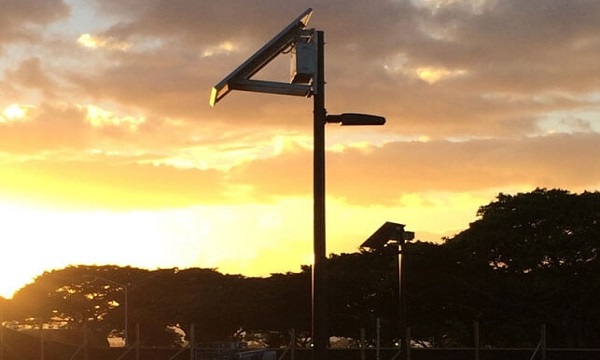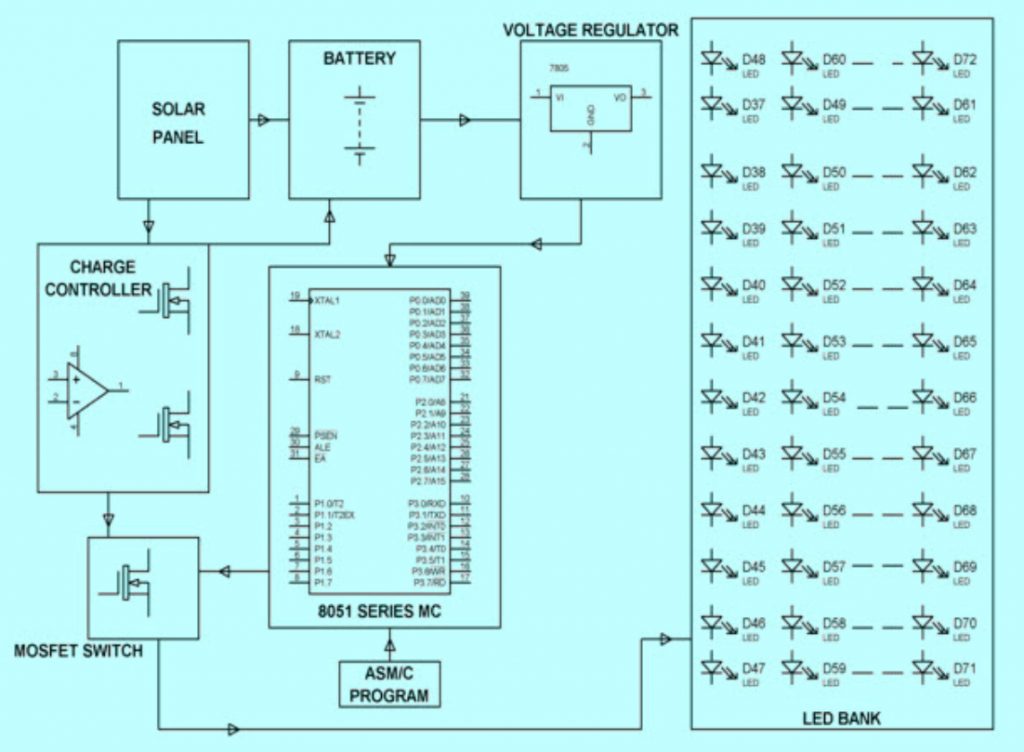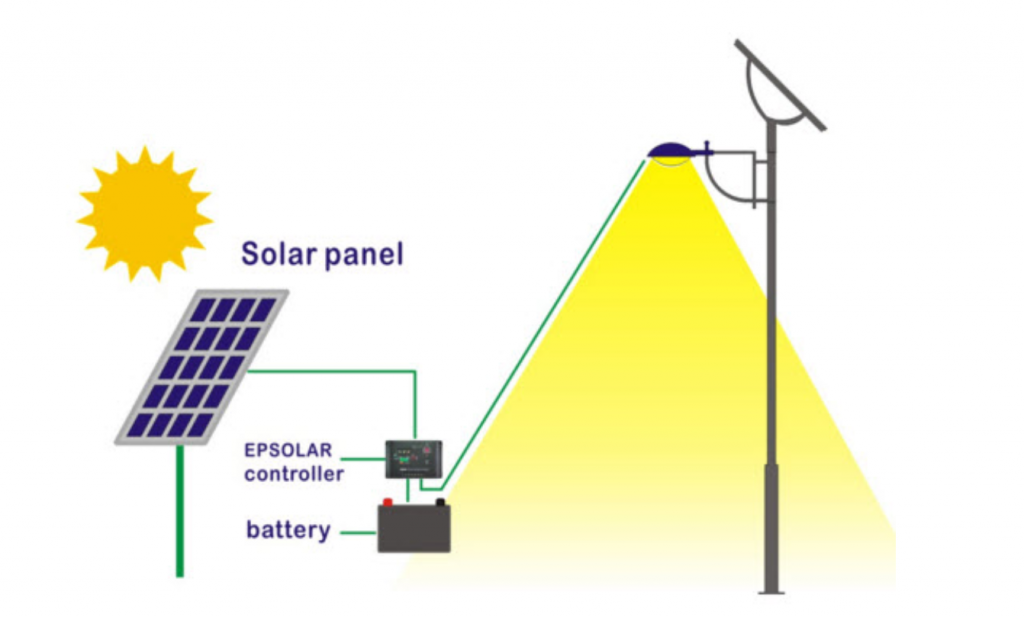If you’ve ever been on any street in any part of the city, you’re likely going to encounter street lights. These public infrastructures are extremely handy sources of light, especially at night when there aren’t much light sources around, and these can at least help you navigate while walking, while driving, or even while commuting. What can be interesting, however, is if you see street lights in various rural areas or areas you could swear don’t have any electrical grids. What’s up with that? In cases such as this, you’ve most likely encountered a solar LED street light.
Are solar LED street lights a worthy investment, though? Solar LED lights are efficient the way solar energy is extremely efficient, especially now that the world is pushing for a more environmentally-free energy system to avoid the adverse effects of climate change. According to World Energy, just the average global solar radiation per year can produce just as much energy needed as 140 m3 of natural gas, 200 kg of coal, or a barrel of oil. This means, under the right optimization process, solar energy can indeed replace modern energy sources we have today.
For some, it can be a surprising sight to see solar-based street lamps on the streets, but they do have their perks. So, how exactly does a solar LED street light work?
Components of solar LED street lights and how they work?
The solar-powered led street lights activate from dusk to dawn. The LED street light automatically turns ON after the dusk and turns OFF after the dawn. The designing of the entire system includes: LED light,Solar panels, Rechargeable battery, Controller, Interconnecting cables and Pole.
Light Emitting Diode
LEDs are used in modern street lights to provide brighter light with low energy consumption. The energy consumption of the LED fixture is lesser than the high-pressure sodium fixture, which is commonly used in traditional street lights. Compare to the other lamps, LED lights do not produce light in all directions. The design of lamps can be affected by the uniqueness of the LEDs. The single LED o/p is not equal to the incandescent and fluorescent lamps. But, a bunch of LEDs will give bright light than these two lamps. The advantages of LEDs mainly include Eco-friendly, durable, zero UV emissions, and long life.
Solar panels
The solar panel or PV cell in the solar street light is one of the most essential parts. These cells are available in two types: monocrystalline and polycrystalline. The monocrystalline conversion rate is higher than the polycrystalline. The light energy used by the solar panels from the sun is used to change solar energy into electricity, which can be used in various applications.
Electrical connections of this project are made in series to achieve an o/p voltage and to afford current facility connections are made in parallel. The majority of the modules use silicon (Si) but most of the solar panels are fixed.
Rechargeable battery
The rechargeable battery is one kind of electric battery and it has electro-mechanical reactions to adjust so it is also called a secondary cell. Generally, there are two kinds of batteries, namely gel cell deep cycle, and lead-acid battery. A rechargeable battery is used in solar LED street lights, this battery is used to store electricity generated from the solar panel during the sunrise to afford energy in the sunset. The lifetime and capacity of the rechargeable battery are essential as they affect the backup power days of the lights.
Controller
A controller is a very significant device in the solar street light, used to decide the status of the charging and lighting by a switch on or switch off. Some recent controllers are pre-programmed and it consists of a battery charger, a Led lamp driver, a driver, a secondary power supply, an MCU, and a protection circuit. The battery can be controlled by the controller from the under and overcharging conditions. The battery can be charged by the power received from the solar panels in the sunrise and while in the sunset it charges the battery.
Interconnecting cables
The cable is used to interconnect the LED, solar panel and battery box which is fixed on the top of the pole. This cable is used to connect a Photovoltaic module to the controller, controller to the lamps, and battery. The size and length of the cable depend on the current being carried to the LED lights and the height of the pole. The assembling of the entire solar LED street light system can be connected using all the above components which use solar energy to give the power to the LED lamps fixed on street poles.
Pole
A strong pole is mandatory for every street light and also for a solar street light. There are various components such as panels, batteries, and fixtures fixed on the top of the pole. In this light, the i/p operating voltage is 12V DC which is a nominal system voltage, and the light o/p at the height of 12 feet is a minimum of 09 LUX (unit of luminance).
How is a solar street light powered?
Off grid solar street lights are comprised of a solar panel assembly mounted to the top of the pole and mounted to face south with no shading. The solar power system is wired to a battery assembly either located directly under or behind the solar panel assembly, or can be remotely mounted lower on the pole for easier maintenance in locking boxes. The solar panels charge the batteries during the day to provide the needed energy for operation of the solar light at night.
How exactly does a solar LED street light work?
As stated before, the solar panel charges the battery during daylight hours. When the sun sets, the solar panel acts as a photocell, communicating with the onboard electronic controls, and turns the light fixture on. The control electronics keeps the light on from dusk to dawn, from dusk for a set number of hours, or many other operating profiles available with commercial solar street light systems. Simple.
The next day at dawn, the solar charge controls reverse this process and charges the battery. From dawn until dusk, the batteries will charge at different levels depending on the sun strength and current weather conditions. This is why it is important to ensure there is no shading on the panel as this can cause the panels to not charge as intended, causing the batteries to not receive the charge that is required to operate again the next night.
A solar street lighting system provides an all in one solution to any lighting application. There is no need to trench in grid power since all the power needed is located on the pole. Even if there is a brown or blackout, these solar powered lights will still be going since they operate completely independent of grid power.
Conclusion
With the above, you hopefully now have a basic gist of how solar LED street lights work, especially in areas without much access to electricity. The portable and environment-friendly nature of a solar LED street light can make them an ample replacement for ordinary street lights, and perhaps a sound option as well for areas without access to an electrical grid.







